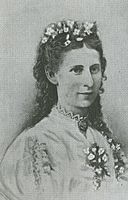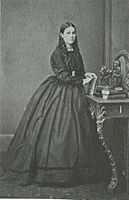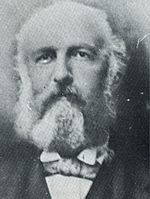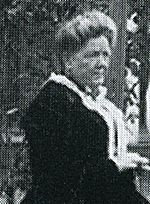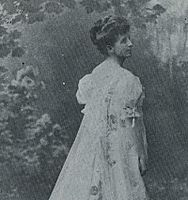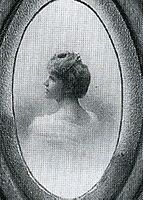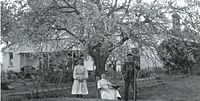Riversdale, Goulburn facts for kids
Quick facts for kids Riversdale |
|
|---|---|
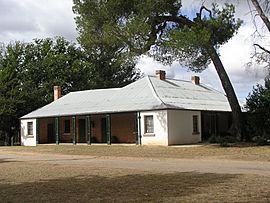
Riversdale
|
|
| General information | |
| Type | House |
| Architectural style | Early colonial Regency |
| Location | Maud Street, Goulburn, New South Wales, Australia |
| Coordinates | 34°44′06″S 149°44′18″E / 34.7351°S 149.7383°E |
| Estimated completion | c. 1840s |
| Owner | National Trust of Australia |
| Design and construction | |
| Main contractor | John Richards |
| Official name: Riversdale | |
| Criteria: | a., c., e., f., g. |
| Designated: | 1 March 2002 |
| Reference #: | 01504 |
Riversdale is a historic house in Goulburn, New South Wales, Australia. It was built around 1840 in an early colonial style. Some of its other buildings are even older. Riversdale is listed on the New South Wales State Heritage Register. This means it is a very important historical place. The National Trust of Australia now owns and looks after the property.
Contents
Riversdale's Story: A Journey Through Time
From Inn to School: Early Days
The land where Riversdale stands was first owned by Matthew Healey. He ran a small hotel there called the Old Goulburn Inn. In 1837, Healey sold his Goulburn properties to retire. An advertisement he placed described the Inn and other buildings.
John Richards bought the property and built Riversdale around 1840. He planned for it to be a coaching inn, which was like a hotel for travelers and their horses. It was called the Victoria Inn. Sadly, he passed away before it opened. His wife, Ann, then managed his businesses. She put the property into a trust for her sons.
The first person to run the inn was Louis Levy. Benjamin Gould took over the license in 1843. Their names are still painted on the stone archway at Riversdale. Benjamin Gould was known for helping travelers. Once, when a bridge flooded, he helped people cross the river on horseback. Another time, he rescued passengers from a mail coach when its horses fell through the bridge.
From about 1850 to 1856, Riversdale became a boarding school for boys. It was called Goulburn Grammar School. David Patterson, a former headmaster from Sydney College, ran the school. Students remembered him as a "splendid man" who was strict but kind.
In 1855, an advertisement for the sale of Riversdale described it in detail. It mentioned 13 rooms, cellars, a large kitchen, stables for horses, and a big garden with fruit trees. It also had a well with fresh water. The property was sold to Thomas Bowen, who later sold it to Henry Wilson. It then became an inn again, called the Criterion Hotel. Later, John Fulljames bought it and used it as his family home.
The Fulljames Family: Naming Riversdale
John Fulljames was born in 1818. He came to Sydney as a chief steward on his uncle's ship and decided to stay. In 1840, he married Elizabeth Smyth. He started a business in Goulburn that dealt with livestock. The Fulljames family had many children. Two of their daughters, Emily and Rachel, married into the Badgery family.
The Fulljames family likely moved into Riversdale in the early 1860s. In 1861, a newspaper mentioned that John had grown a prize apple at his home in Goulburn. The first time the property was called "Riversdale" was in 1862. This was in a marriage notice for their eldest daughter, Emily. It seems the Fulljames family gave the house its name.
The Twynam Family: A Legacy of Art and Service
The Twynam family bought Riversdale in 1875 after renting it for several years. Edward Twynam was born in England in 1832. He moved to Australia when he was 23. He became a surveyor and worked on many important surveys in New South Wales. From 1888 to 1900, he was the Surveyor-General of New South Wales.
Edward moved to Goulburn in 1864. In 1866, he married Emily Rose Bolton. Emily was born in 1845 and was one of nine children. Her older sister, Lady Mary Windeyer, was a famous suffragette (someone who fought for women's right to vote) and charity worker.
Emily Twynam loved art and crafts. Many of her works are still around today. She was skilled in woodcarving, embroidery, and drawing. In 1893, she won an award for her embroidery at the Chicago International Exhibition. She had over 130 drawings of plants, birds, and lizards in her sketchbooks. She also carved furniture and picture frames with nature themes. Some of these are displayed at Riversdale.
Emily passed away in 1910, and Edward died in 1923 at 91. After his death, their two unmarried daughters, Edith and Alice Joan, lived at Riversdale. In 1939, their sister Phoebe also joined them. All three sisters lived there for the rest of their lives. When Alice Joan, the youngest sister, died in 1967, the property was sold to the National Trust of Australia. The Trust still owns and manages Riversdale today.
Riversdale Today: Managed by the National Trust
The National Trust of Australia took over Riversdale in 1967. They worked to restore its gardens and buildings. In 1967, the garden was redesigned by Jean Friend. It was made into a Victorian cottage garden with many different plants and heritage roses. Fruit trees were also added to the existing orchard.
For a while, the property was leased out to try and get money for its upkeep. This did not work out, and the committee that helped with the garden resigned. Then, a long drought hit Goulburn. Many large trees and special plants in the garden died.
Since then, local volunteers and the National Trust have worked hard to bring the garden back to life. Debbie Sibbick became the new Property Manager. The "Friends of Riversdale" group was formed by local volunteers. They work with other groups to care for the house and garden. In 2011, an appeal raised $25,000 to install an irrigation system. One hundred olive trees were planted to hide nearby buildings.
In 2009, a new committee was formed, and volunteers started working in 2010. They uncovered old gravel paths and began new planting. The garden now has many beautiful flowers like lamb's ear, catmint, peonies, and roses. In October 2012, the garden won "Best Overall Garden" in a local competition.
In 2013, over 500 people gathered at Riversdale for a special Mass. This celebrated the 150th anniversary of the Catholic Diocese of Goulburn. The gardens were the site of Goulburn's first Catholic Mass in 1833.
Volunteer Ray Shiel has taken charge of Riversdale's vegetable garden. He has transformed it, making it very appealing. The garden now provides fresh produce for the kitchen, which helps raise money for the property. This continues Riversdale's tradition of being self-sufficient. Ray also works with groups like the local TAFE NSW School of Horticulture.
In 2012, Riversdale received a grant to build a concrete compost bin. This helps recycle green waste from the property. The garden was opened to the public for the first time in 2012 with a special garden fair. This event won an Australia Day Award.
Riversdale now hosts an annual Open Garden Australia day and Vintage Fair. Monthly homestead markets started in 2014. Riversdale has become a popular spot for its historic gardens and local produce. A grant helped build a ramp for disabled access to the toilets. In 2015, a Growers' and Rare Plant Fair was held. Riversdale also hosted a Victorian Christmas event. Volunteers continue to promote sustainable gardening and create local dishes using garden produce.
What Riversdale Looks Like
Riversdale is located at the northern edge of the Old Town of Goulburn. The town plan was set up in 1829 to help organize new towns in the colony.
The Garden and Grounds
The property covers about 10 acres. Riversdale has an old colonial garden that has been restored since 1967. Volunteers have added many shrubs, flowers, bulbs, and trees.
Some important old trees still remain. These include fruit trees planted in the 1840s, like a medlar tree. There's also an early black locust tree and a line of elm trees from the 1850s. Other old trees include Aleppo, Canary Island, and Monterey pines, as well as holm oaks, honey locusts, Irish yew, and funeral cypresses.
Three espaliered apple trees from 1918 are still there. The garden was at its most beautiful during the Twynam family's time, from 1872 to 1969. The garden was restored by volunteers between 2010 and 2012. It won "best overall" in a local garden competition in 2012. An old well, possibly from the 1840s, also remains.
The Barn
The stone barn is much older than the house, built in 1828. It is the only building left from the "Old Township" of Goulburn. This makes it one of the oldest buildings in Goulburn.
The House
Riversdale is a single-story house built in the Colonial Georgian style. It has two wings that form a courtyard at the back. The house is made of brick with an iron roof, though it originally had a shingle roof. It has timber floors and cedar wood details. The doors have eight panels and are made of cedar. The windows have small glass panes held by cedar bars. The inside design of the house dates back to about 1840. It was built on land given to Mathew Healy in 1830.
Why Riversdale is Important
Riversdale is a very important historical site in New South Wales. Its location shows where Goulburn town first began. The house and its buildings, including the gardens and paddocks, show what a typical early Australian colonial home looked like. The stone barn is especially important because it is the only building left from the first settlement of Goulburn Plains in 1828. The house and its other buildings also show how people lived in the 1800s.
Riversdale has been an inn, a school, and a family home. This shows its strong connection to the area's social history. It is most known for its connection to the Twynam family. Edward Twynam helped explore and map the southwestern parts of the colony. His family also made important contributions to the culture of the area. Riversdale was the second property the National Trust of Australia (NSW) bought to protect its history.
Riversdale is a great example of a building in the Old Colonial Regency style. It also shows the typical features of inns built between 1830 and 1880. Riversdale is known for its beautiful design and excellent craftsmanship.
The house also has historical and artistic importance because of its old colonial garden. This garden has been restored by National Trust volunteers since 1967. Important old trees still growing there include fruit trees from the 1840s, an early black locust tree, elm trees from the 1850s, and various pine and oak trees.
Riversdale in Goulburn was added to the New South Wales State Heritage Register on March 1, 2002.
See also
- List of historic homesteads in Australia



